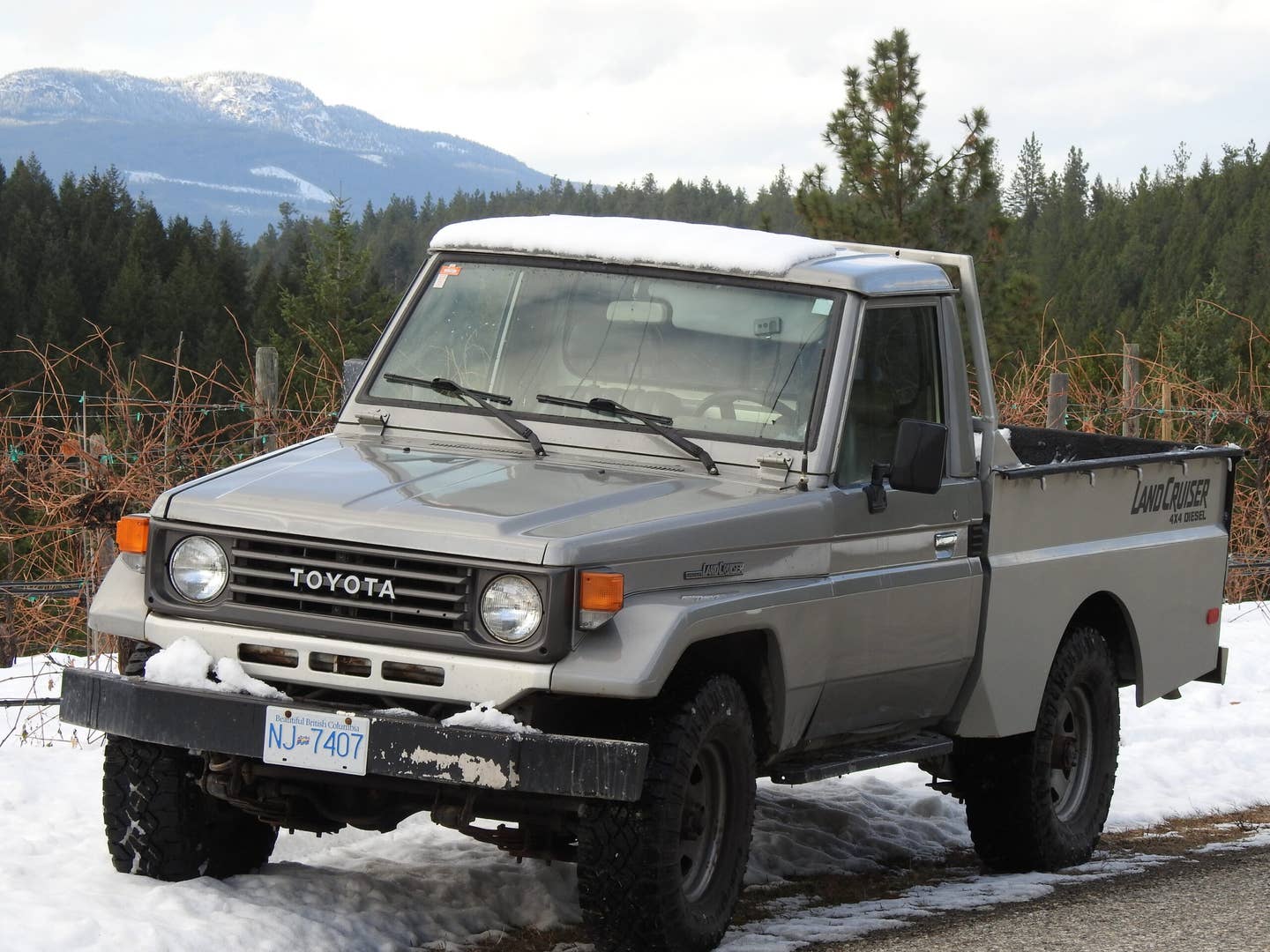Boeing Should Take A Lesson From Toyota’s Failures
Like Toyota, Boeing needs to find greatness again.

Russ Niles/AVweb
In my driveway is, to the eye of certain beholders, an absolute work of art.
Oh, there's the rim of light surface rust on the bottoms of the doors, the kind that defies even the most diligent rustproofing campaign. Then there's the almost prehistoric, in automotive terms, utterly mechanical drive train and other systems but I think they just make it more beautiful.
Fire it up and it sounds like dry rocks in a cement mixer, an uneven cacophony of knocks and bangs and unholy crackling that is as loud in the cab as it is outside.
Take it for drive and you'll be lucky if your head doesn't hit the headliner on the mildest bumps, irregularities a modern SUV or pickup would barely transmit to your butt and back. And you might as well roll down the window (with the handcrank) as you acknowledge the appreciative looks, the ubiquitous upturned thumbs and guesses as to its provenance.
If you didn't know what you were looking at, you'd likely think was from the 50s or 60s, a relic from another era, but in truth it's a 1997 model, barely old enough to qualify for collector status in most jurisdictions and not a terribly rare vintage on the streets and in the parking lots of today's world. In a world dominated by sizzle and style, the Land Cruiser's square-jawed simplicity is an expression of the brand's commitment to rugged durability.
I am the proud owner of this Toyota HZJ75 pickup, although I'm probably not worthy of it. Acknowledged as one of the most capable off-road vehicles ever built, I rarely take it off pavement because that's not one of my interests. I do, however, not think twice about plowing through a foot of fresh snow or into a muddy field. It is virtually unstoppable and if it ever becomes necessary I can take it into three feet of water or up a 30% rock-strewn grade.
It will also carry 3,000 pounds (yep, it's a one-and-a-half ton) and with only 130,000 miles on it I can reasonably expect its next series of owners (it certainly won't be me) to put another 870,000 miles on it with just the most basic maintenance, regular lubrication mainly. And it will continue to turn heads for however many decades that takes.
The 70-series pickup was never sold by Toyota in North America but there are millions of them around the world, notably in Australia, Africa, the Middle East and Central America, places where routine access to the backcountry is part of everyday life and not mostly for recreation or competition. I don't know how mine, a rare left-hand-drive model, got to Ontario where I found it.
The company has introduced the 70 series to Canada and the U.S. for 2024 but as you can imagine it's not really the same. Gone is the great clattering in-line six-cylinder diesel in favor of a silently powerful turbocharged V-6. The five-speed manual transmission has been booted to oblivion by a silky smooth 10 speed automatic. It has electric windows, a climate control system, airbags all over the place and a great big touchscreen in the middle of the padded dash. The floor-mounted drive mode shifter has been retained but I'm not sure why. A computer puts power to each wheel as necessary.
That's all good stuff that I really like in my other vehicles. But Toyota has jammed all that tech into a nostalgic package that cheapens the heritage that it claims to be celebrating. The new trucks are novelties that frankly smack of a desperate attempt to evoke the quality, reliability and general toughness that has been Toyota's hallmark.
Having said that, they seem like nice trucks. It's the passing them off as Land Cruisers that I object to. Yes, designs evolve and technology marches on but the packaging is bogus in this case, I think. Just build a new truck.
Like Boeing, Toyota has been going through a rough patch and its very reputation is at risk. It's not easy to find examples of shared circumstances in the rarified corporate air those two occupy but they seem comparable. Anyway, car publications are rife with stories about the world's biggest, and formerly one of its most respected, carmakers. Like the aviation media and Boeing, they muse about its potential failure.
As with Boeing, it's not one colossal blunder that has caused this. It's a series of colossal blunders, all of them engineering and manufacturing lapses, just like at Boeing.
Ten years ago I remember driving past the local Toyota dealership where a stack of truck frames grew in one corner of the lot. They were the result of a recall for a generation of Tacoma pickups whose frames were vulnerable to rusting at critical points where they would simply bust in two. After much number crunching, it was obviously determined that the least expensive fix was lifting the rest of the truck from the frame and putting it on a new one. The cost must have been staggering.
Before that there were issues with exploding airbags and other serious but almost forgivable problems. But the frame issue was supposed to be the lesson learned that ended the parade of quality lapses and sent Toyota into a confident and prosperous future.
But, as with Boeing's MAX debacle, the insidious internal rot that promulgated it didn't just disappear with the platitudes that head-bowed company executives murmured in apology. No, Toyota's equivalent of Boeing's door plug blowout was the recent announcement that it was replacing 102,000 3.5 liter turbocharged engines in its flagship Tundra pickup and Lexus SUV lines, not because there's anything intrinsically wrong with them but because of, like Boeing, ridiculously sloppy manufacturing. Machining debris wasn't cleared from them during assembly and the crankshaft bearings failed after only a few thousand miles.
How does this matter? Well, I'm a pretty big Toyota fan but I don't think I'd buy one right now, and when my son was shopping for a new vehicle I recommended he avoid the brand. Multiply that conversation by a few million and you get the idea.
As for Boeing, while I don't run screaming from a MAX I do notice myself being more interested in the equipment hoisting me to wherever.
Boeing is at an earlier stage in its existential crisis than Toyota and the car company's experience can be instructive. Boeing must react to its increasingly desperate circumstances, and one of the suggestions by pundits is that it should pull the trigger on a new clean-sheet 797 to divert attention from its problems and give customers something to look forward to.
Fortunately, Boeing can't afford to take that hairball suggestion and if it could it would absolutely be the wrong move. Boeing needs to pour every nickel and every ounce of creative energy it can muster to fix its fundamental issues. It has plenty of backlog to keep revenue flowing and fund the programs that will restore it to the engineering and customer focus that made it the world's biggest, and, at one time, most respected planemaker.
It should avoid at all costs trying to hide behind the kind of cheap grandstanding Toyota has, in my opinion, engaged in with a mall parking lot knockoff of its legendary Land Cruiser. It didn't fool anyone.
And when the time comes for a new airplane Boeing simply has to knock it out of the park with a design—and execution—that vaults it back to the top.
Truly great companies can do that. Boeing still has that chance. Toyota may have missed it.






